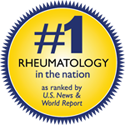Background
Knee pain from osteoarthritis (OA) tends to be poorly correlated to degree of cartilage loss. Other factors related to knee OA, including bone marrow edema and synovitis, may be more proximal determinants of pain in knee OA. Synovitis is usually quite limited in knee OA and difficult to quantify on physical exam. Magnetic resonance (MR) imaging is a more sensitive technique for assessing synovitis in knee OA. Here, Hill et al (Ann Rheum Dis 2007; 66: 1599) explore changes in knee pain according to changes in knee structures, including synovitis, in participants in the Boson Osteoarthritis of the Knee Study.
Methods
The Boston Osteoarthritis of the Knee Study is a prospective cohort study investigating the natural history of symptomatic knee OA. MR assessment, performed at baseline and repeated after 15 and 30 months, was evaluated for cartilage morphology and synovial thickening. The association between change in synovitis scores with reported knee symptoms and cartilage loss were explored using the generalized estimating equation (GEE) method.
Results
A total of 270 participants (59% male) with a mean age of approximately 67 years had at least one follow-up MR study. At baseline, the median Kellgren-Lawrence grade (a measure of severity of joint space narrowing and osteophytes) was 3, indicating moderate multiple osteophytes, definite narrowing of joints space, some sclerosis and possible deformity of bone contour in most patients. Mean pain score at baseline was 44.2 mm on a 100 mm scale, and decreased slightly, on average, at follow-up. Synovitis was present in approximately 75% of patients at baseline, with most graded as 1 on a semi-quantitative scale ranging Baseline synovitis did not correlate with baseline pain score (r=0.09). However, change in synovitis was moderately correlated with change in pain (r=0.21, p=0.0003). The association between change in synovitis and change in pain was greatest for synovitis located at the infrapatellar and intercondylar fat pads. Cartilage loss was detected in half of patients at follow-up; however, change in synovitis was not significantly associated with change in cartilage at any site.
Conclusion
Changes in knee synovitis were associated with changes in knee pain, but not to changes in cartilage loss, in patients with painful knee OA.
Editorial Comment
These are interesting findings that suggest that pain control in knee OA should include the treatment of synovitis, and provide some support for the analgesic benefits derived from intra-articular injections of corticosteroids and, more recently, biologics. Knee pain in OA is complex and multifactorial, with a combination of structural pathology interacting with pain perception/neurobehavioral pathways resulting in patient assessed symptoms. For this study, no consideration of extra-articular confounders, such as analgesic medication use or depression, was made—factors which could alter the associations observed either in a positive or negative way. Regardless, the findings are compelling and suggest that a follow-up study employing a controlled effective intervention (i.e. injected corticosteroids) should be performed to validate the association.

